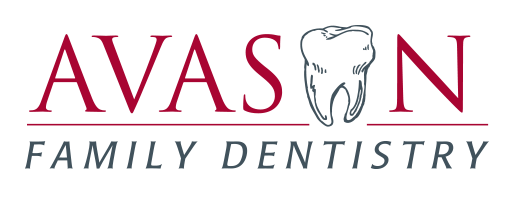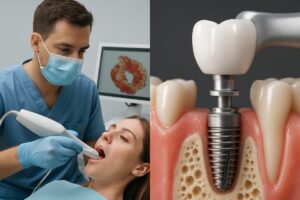If you’re reading this, you want to learn how dental implants full upper can restore a full upper arch of teeth and improve chewing, speech, and confidence. This guide explains who qualifies, the treatment options, what to expect during planning and surgery, recovery, costs, and how to choose care.
Where helpful, this article refers to dental implants full upper in Denver, NC to highlight local treatment considerations and available advanced technology. Read on for clear next steps if you think a full upper restoration might be right for you.
Who is a candidate for dental implants full upper
Typical signs you might need a full upper restoration include many missing upper teeth, loose or uncomfortable upper dentures, bite problems, or severe decay across the upper arch. If you struggle to chew, have constant denture relines, or hide your smile, a full upper solution may help.
- Medical and dental factors that affect candidacy:
- Bone volume and density in the upper jaw
- Gum health and active periodontal disease
- Medical history—diabetes control, heart conditions, and smoking
- Medications that affect healing or bone (bisphosphonates, immunosuppressants)
A consultation with a specialist will clarify whether you need bone grafting or sinus lifts before proceeding with dental implants full upper.
Types of full upper solutions and how they differ
All-on-4 / All-on-6 vs implant-supported bridge vs individual implants
All-on-4 or All-on-6 use four or six implants to support a full arch prosthesis. They are often faster and less costly than placing many individual implants, and they offer strong stability. An implant-supported bridge uses several implants to hold a multi-tooth bridge and can be a middle ground. Individual implants replace each missing tooth and are used when teeth remain or when bite forces demand separate roots.
Comparison at a glance:
- Stability: All-on systems and bridges provide excellent support; individual implants offer the most natural feel for single-tooth replacement.
- Cost and complexity: All-on is usually more cost-effective for full arches; individual implants are more complex when many teeth are missing.
- When used: All-on for full-arch extractions; bridges for grouped tooth loss; individual implants for selective replacements.
Immediate load (same-day) vs staged approach
Immediate load (same-day) means you may receive temporary teeth the same day as implant placement. It’s possible when implants have good initial stability and the bite is carefully managed. The staged approach leaves implants undisturbed while bone heals, then places the final prosthesis later. Your anatomy, bone quality, and medical health determine which route is safest.
What to expect during evaluation and treatment planning
Planning a dental implants full upper in Denver, NC case relies on precise diagnostics and team coordination. Expect CBCT 3D imaging, intraoral scans for digital impressions, and virtual smile simulation to preview outcomes.
Pre-op steps typically include a medical review, CT-based surgical planning, possible bone grafting or sinus lift if bone is low, and a discussion of sedation options (oral, IV, or in-house sedation) to keep you comfortable.
The surgical and restorative steps explained
Typical steps for a full upper restoration:
- Tooth removal and site cleaning if extractions are needed.
- Implant placement using guided surgery for precise positioning.
- Use of PRGF/PRF to support faster soft- and hard-tissue healing.
- Soft tissue management with diode laser when needed for better gum contours.
- Temporary prosthesis on the same day or later delivery of a final restoration after healing.
Timeline and milestones: surgery day (placement and temporary teeth if immediate), first week (swelling and initial healing), prosthetic delivery (weeks to months depending on protocol), and regular long-term follow-ups to check implants and prosthetics.
Recovery, risks, cost factors, and long-term care
Recovery expectations: moderate swelling and soreness for a few days, soft-food diet for the first 1–2 weeks, and limited activity. Time off work varies with the extent of surgery and sedation used.
Common risks include infection, implant failure, and sinus or nerve issues. Specialists reduce these risks with careful planning, sterile technique, and technologies like CBCT imaging and guided surgery.
What affects cost: number of implants, need for bone grafts or sinus lifts, materials (acrylic vs zirconia), lab fees, and whether same-day restorations are provided. Insurance and financing options can help manage expenses.
Maintenance tips: brush and floss daily around the prosthetic, attend regular checkups and professional cleanings, and expect prosthetic replacements or relines over many years depending on wear.
Choosing a provider for dental implants full upper
For complex full upper cases, a periodontist or implant specialist matters. Specialists have extra surgical training and often use advanced tools that improve safety and outcomes.
Avason Family Dentistry in Denver, NC is led by board-certified periodontist Dr. Frank Avason. The practice uses CBCT imaging, intraoral scanning, Tekscan digital occlusal analysis, diode lasers, and PRGF/PRF to support predictable healing. They offer in-house sedation and partner with labs for same-day restorations when appropriate.
To see if dental implants full upper in Denver, NC is right for you, schedule a consultation to review your care options, imaging, and a personalized treatment plan. Call Avason Family Dentistry or book online to get started.




